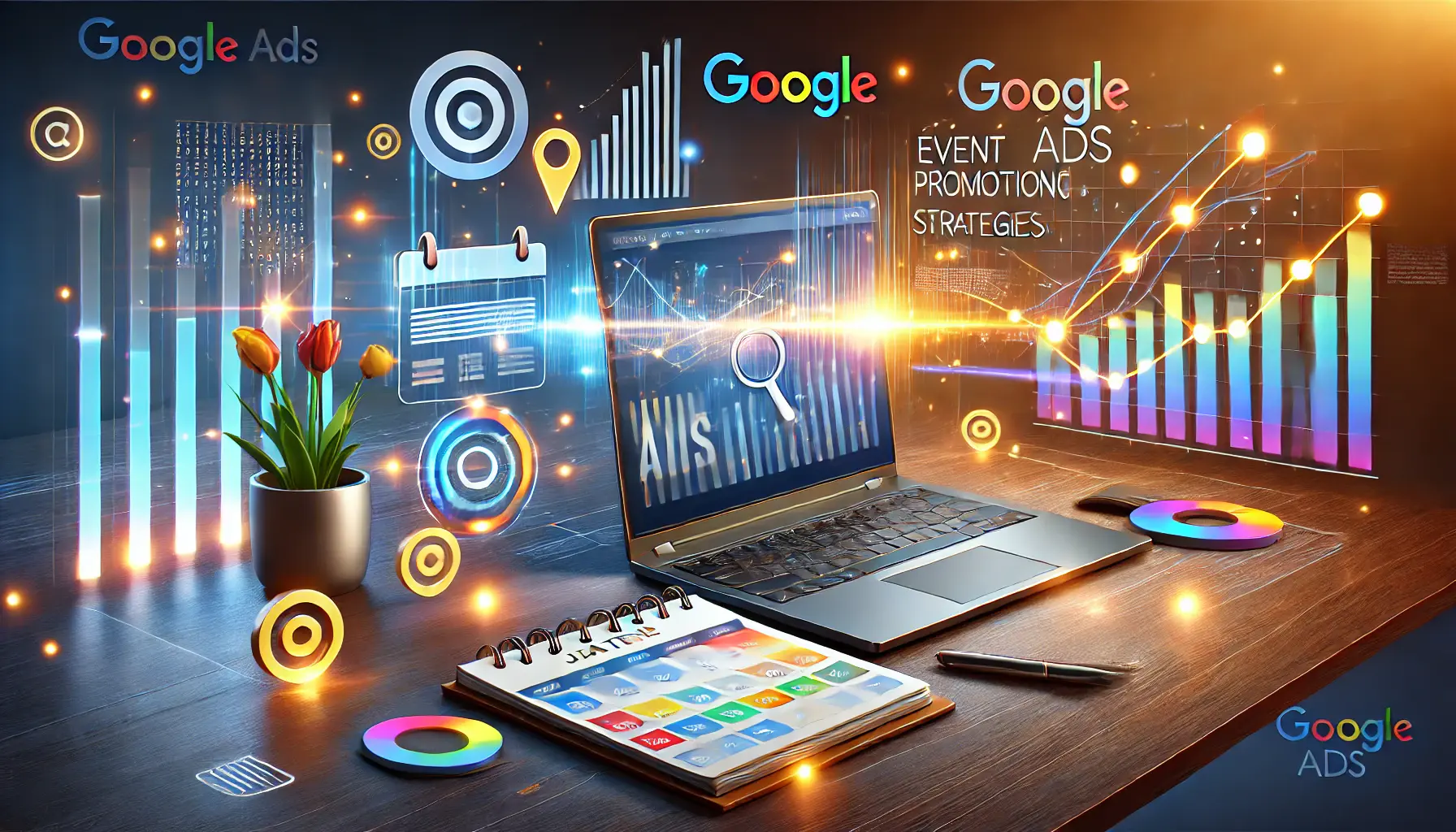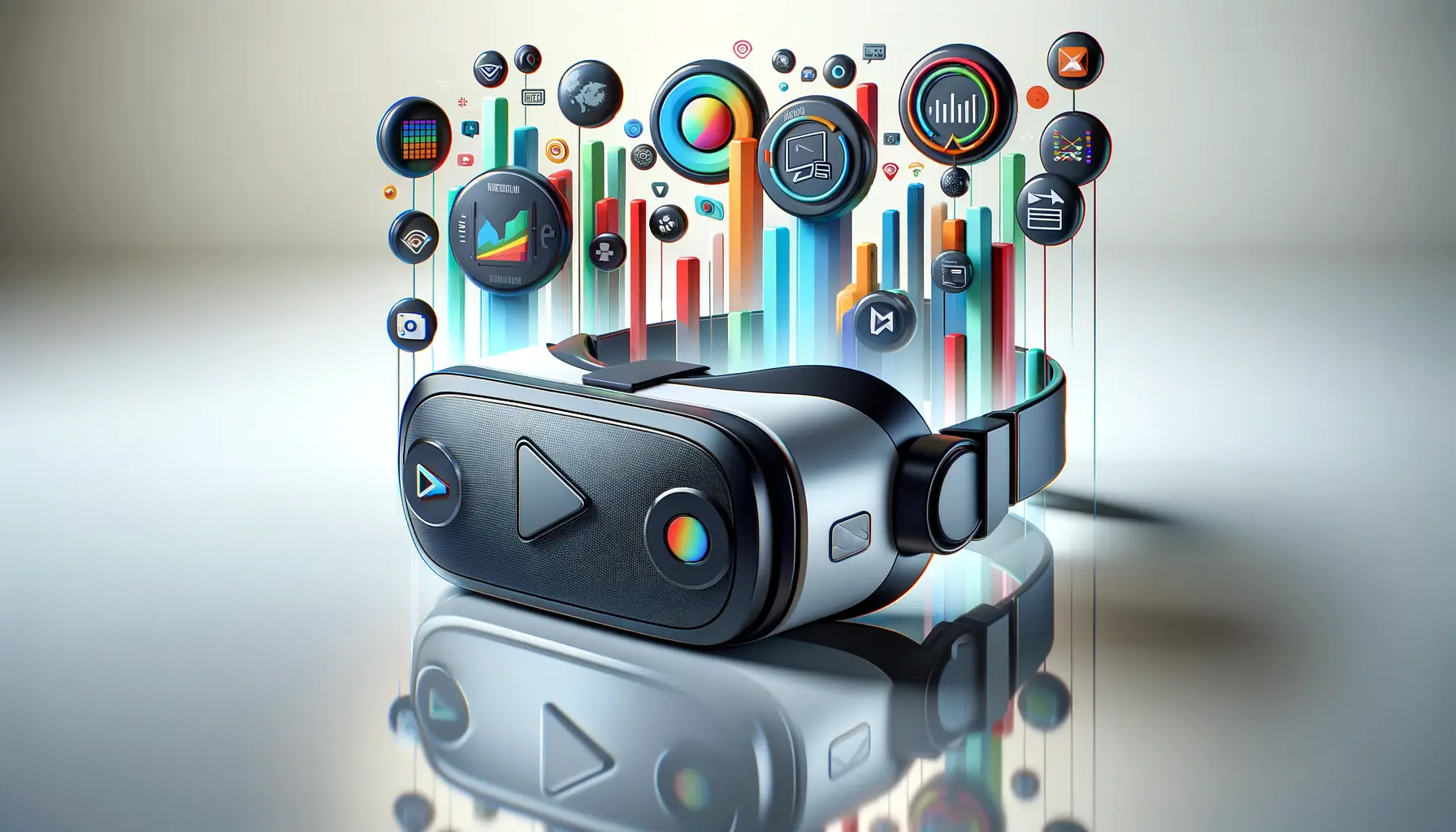In the modern digital era, marketing your virtual events efficiently is important to reach a larger audience and achieve successful engagement.
One effective tool for this is LinkedIn, which is famous for its professional networking features.
Using LinkedIn Ads can be a great way to boost your virtual event promotion, reaching professionals who are interested in your content.
Let’s see how optimizing your LinkedIn Company Page can be the starting point for effective event promotion.
- 1. Optimize Your LinkedIn Company Page for Event Promotion
- 2. Create a Standalone LinkedIn Event Page
- 3. Leverage LinkedIn’s Targeted Advertising Features
- 4. Activate Your Network and Invite Sharing
- 5. Optimize Your Approach and Measure Success
- Maximizing Virtual Event Promotion Using LinkedIn Ads
- Frequently Asked Questions for Virtual Event Marketing with LinkedIn Ads
1. Optimize Your LinkedIn Company Page for Event Promotion
Your LinkedIn Company Page is most likely the first place your prospective attendees interact with.
A well-optimized page not only makes your brand look professional but also serves as a go-to location for anything event-related.
Start by making sure your company profile is up to date and includes in-depth details on your upcoming virtual event.
These include:
- Event Details: Clearly provide the date, time, and agenda of the event so that potential attendees have all necessary information.
- Visual Content: Use engaging visuals such as banners and teaser videos to draw attention and highlight the event’s value proposition.
- Past Events: Showcase details of past successful events to build credibility and demonstrate experience in hosting impactful sessions.
By placing this information prominently, you make it easier for your audience to understand the benefits of attending your virtual event.
Use Keywords Wisely
Integrate relevant keywords, such as ‘virtual event promotion,’ in your company description and updates.
This optimizes your page ranking in LinkedIn searches, making it more likely that interested professionals will discover your events.
Interact with Your Audience
Post regular updates about your event, such as speaker announcements, agenda highlights, and behind-the-scenes content.
Encourage your followers to engage by asking questions or sharing their thoughts.
This interaction helps create engagement and build anticipation.
Make Use of Showcase Pages
Leverage LinkedIn’s Showcase PagesDedicated subpages on LinkedIn designed for highlighting specific aspects of a company, such as products or events. for specific events or topics.
This allows you to tailor content for specific audience segments, providing targeted information and increasing engagement.
By implementing these strategies, your LinkedIn Company Page becomes a powerful platform for virtual event promotion, effectively attracting and informing potential attendees.
2. Create a Standalone LinkedIn Event Page
Your standalone LinkedIn Event Page is an integral component of your virtual event promotion strategy.
This dedicated hub not only provides key information about your event but also enables engagement with your target audience.
To create a LinkedIn Event Page, follow these steps:
- Access the ‘Create an Event’ Feature: From your LinkedIn homepage, select the ‘Events’ tab. Look for the option to ‘Create an Event.’
- Fill in Event Details: Provide essential details such as the event name, date, time, and a descriptive title that highlights the value proposition for attendees.
- Choose the Event Format: Define whether your event is online or offline. For virtual events, you can integrate platforms like LinkedIn Live or provide an external streaming link.
- Include a Cover Image: Use a visually appealing banner that aligns with your event theme to capture attention and generate interest.
- Set the Organizer: Ensure that your company page is listed as the event organizer to maintain brand consistency.
Once your event page is live, it’s important to maximize its effectiveness.
Use Multimedia Content to Promote Event Highlights
Attract potential attendees by incorporating diverse multimedia elements:
- Promotional Videos: Share teaser videos that give a preview of what participants will experience, such as keynote speakers or special content.
- Speaker Introductions: Post short interviews or bios of your speakers to build credibility and generate interest.
- Behind-the-Scenes Content: Provide sneak peeks into event preparations to humanize your brand and create excitement.
Make Registration Simple with Integrated Forms
Simplify the registration process to increase sign-ups:
- LinkedIn Registration Forms: Use LinkedIn’s native registration forms to allow users to register effortlessly while capturing essential attendee information.
- Clear Call-to-Action (CTA): Add a compelling and clear CTA button, such as ‘Register Now,’ to encourage immediate action.
- Automated Confirmations: Set up automated confirmation messages or emails to acknowledge registrations and provide further event details.
By thoughtfully formatting and optimizing your LinkedIn Event Page, you create a professional and engaging platform that serves as the foundation of your virtual event promotion strategy.
3. Leverage LinkedIn’s Targeted Advertising Features
To reach a wide audience and maximize the impact of your virtual event promotion, you need to leverage LinkedIn’s powerful targeted advertising features.
These tools allow you to target specific groups, ensuring that your event reaches professionals who are most likely to attend.
Utilize Sponsored Content to Reach a Broader Group
Sponsored Content enables you to promote your event directly in the LinkedIn feed, blending seamlessly with organic posts.
This native advertising approach ensures higher engagement and visibility.
To use Sponsored ContentA paid advertising format on LinkedIn that promotes content directly in users' feeds to increase visibility and engagement. effectively:
- Write Engaging Ad Copy: Craft concise and captivating messages that highlight the value of attending your virtual event.
- Include Eye-Catching Visuals: Use high-quality images or videos to capture attention and reflect professionalism.
- Add a Clear Call-to-Action (CTA): Encourage users to sign up or learn more with direct CTAs like ‘Register Now’ or ‘Join Us Live.’
By targeting specific demographics, job functions, or industries, you can ensure your Sponsored Content is seen by the most relevant audience.
Use Sponsored Messaging to Send Targeted Invitations
Sponsored Messaging, including Message AdsA type of Sponsored Messaging ad that delivers a single, direct message to a user's LinkedIn inbox. and Conversation AdsAn interactive LinkedIn ad format that allows businesses to engage users with multiple call-to-action options within LinkedIn messaging., allows you to send personalized invitations directly to LinkedIn members’ inboxes.
This direct approach can result in higher conversion rates.
Best practices for Sponsored MessagingA LinkedIn advertising feature that allows businesses to send direct messages to targeted users' inboxes. include:
- Personalize the Message: Address recipients by name and tailor content to their industry-related interests or job roles.
- Highlight Event Benefits: Clearly articulate the value of attending the event.
- Offer Simple Registration Links: Provide direct links to your event registration page to streamline the sign-up process.
By using targeted messaging, you create a more personalized experience that resonates with potential attendees.
Use Event Ads to Promote Directly Within LinkedIn
LinkedIn Event AdsA LinkedIn ad format designed specifically to promote events by displaying key details directly within the ad unit. are specifically designed to showcase your events to the right audience, increasing visibility and driving registrations.
These ads display essential event details, such as the date, time, and participation method, directly within the ad unit.
To maximize the effectiveness of Event Ads:
- Ensure Correct Event Information: Double-check that all event details are accurate and up to date.
- Use Engaging Media: Incorporate compelling images or videos that capture the essence of your event.
- Set Precise Targeting Parameters: Define your audience based on industry, job title, or seniority level to reach the most relevant professionals.
Event Ads offer a streamlined way to promote your virtual event on LinkedIn, making it easier for professionals to discover and register.
By utilizing these targeted advertising options, you can maximize your virtual event promotion on LinkedIn, ensuring your event reaches the right audience and generates the desired impact.
4. Activate Your Network and Invite Sharing
Proactively engaging your network and inviting sharing are essential to boost your virtual event promotion on LinkedIn.
This approach leverages personal relationships and helps your event gain visibility naturally.
Invite Employees to Share the Event in Their Networks
Your staff can be powerful advocates for your event.
Encourage them to:
- Share Event Posts: Ask employees to post about the event on their LinkedIn profiles to increase visibility among their professional networks.
- Create Personal Invitations: Employees can send personalized messages to their connections, inviting them to attend the event.
- Engage with Event Content: Liking, commenting, and sharing event-related posts can boost engagement and reach a wider audience.
This collective effort enhances the credibility and reach of your virtual event, increasing potential attendee interest.
Join Relevant LinkedIn Groups to Promote the Event
LinkedIn Groups related to your industry or event topic provide an excellent opportunity for promotion.
To leverage groups effectively:
- Join Active Groups: Identify and participate in groups where your target audience is engaged.
- Share Event Details: Post about your event, emphasizing its value and relevance to group members.
- Have Conversations: Engage in discussions to build relationships and naturally introduce your event.
Ensure you follow group guidelines and contribute meaningful insights to avoid appearing overly promotional.
Collaborate with Industry Influencers to Reach a Broader Audience
Partnering with industry influencers can significantly expand your event’s reach.
Consider the following strategies:
- Find Suitable Influencers: Look for professionals with a strong LinkedIn presence and credibility in your industry.
- Offer Reciprocal Value: Provide influencers with unique content, speaking opportunities, or co-hosting roles to encourage collaboration.
- Tap Their Networks: Request influencers to share your event with their followers, increasing credibility and visibility.
Influencer collaborations can introduce your event to new audiences and enhance its perceived value.
By engaging with your network and encouraging sharing, you tap into the collective power of LinkedIn connections to promote virtual events more effectively.
5. Optimize Your Approach and Measure Success
Measuring the success of your virtual event promotion on LinkedIn is essential to understanding what works, what doesn’t, and where improvements can be made.
By analyzing key performance indicators and implementing optimization strategies, you can enhance future event promotions.
Track Event Analytics on LinkedIn
LinkedIn provides comprehensive event analytics, offering valuable insights into attendee interactions and event performance.
To monitor these analytics:
- Access Event Analytics: Navigate to the top of your LinkedIn homepage, click on the Home icon, select your Event from the side panel, and open the Analytics tab.
- Key Metrics to Monitor:
- Attendee Numbers: Track the overall number of attendees to measure your event’s reach.
- Engagement Levels: Assess interactions such as comments, likes, and shares to gauge participant engagement.
- Peak and Lifetime Views: Identify when engagement was highest and measure overall watch time.
Consistently tracking these metrics helps you assess your event’s impact and identify areas for improvement.
Utilize A/B Testing to Refine Marketing Strategies
A/B testing, also known as split testing, involves comparing two versions of an ad or content to determine which performs better.
On LinkedIn, you can use A/B testingA method of comparing two versions of content, ads, or web pages to determine which performs better based on engagement metrics. to optimize different aspects of your campaign:
- Ad Creatives: Experiment with different images, headlines, or ad copy to see what resonates best with your audience.
- Targeting Options: Test different audience segments to identify the most responsive groups.
- Ad Formats: Compare different formats, such as single-image ads versus carousel ads, to determine which generates better engagement.
By systematically testing these elements, you can refine your promotion strategies and maximize the impact of your virtual event promotion.
Gather Feedback from Attendees for Continuous Improvement
Collecting feedback from event attendees provides valuable insights into their experience and expectations.
Consider these methods:
- Post-Event Surveys: Send surveys to collect opinions on content quality, presentation, and overall satisfaction.
- Follow-Up Discussions: Encourage participants to share feedback through LinkedIn posts or group discussions.
- Monitor Social Media Mentions: Track mentions of your event on LinkedIn to identify common praises or concerns.
Using this feedback allows you to make data-driven adjustments to future events, enhancing attendee engagement and satisfaction.
By continuously tracking performance and refining your strategies, you can improve your virtual event promotion on LinkedIn, ensuring more successful and impactful events.
Maximizing Virtual Event Promotion Using LinkedIn Ads
Successfully promoting a virtual event must be a data-driven and strategic endeavor.
LinkedIn Ads serve as a powerful tool to reach professionals, connect with your audience, and generate strong attendance.
By leveraging LinkedIn’s features effectively, you can significantly amplify your virtual event promotion and achieve measurable success.
Key Takeaways for a Successful LinkedIn Event Promotion
Throughout this guide, we have explored five strategies to tap into LinkedIn’s potential for virtual event promotion.
Here’s an overview of the key steps:
- Optimize Your LinkedIn Company Page: Ensure your company profile is up-to-date, visually appealing, and informative to build a strong foundation for event promotion.
- Create a Standalone LinkedIn Event Page: Set up a dedicated event page with clear information, engaging media, and easy registration options to attract attendees.
- Engage with LinkedIn’s Targeted Ads: Utilize Sponsored Content, Sponsored Messaging, and Event Ads to reach a more targeted audience and boost engagement.
- Get Your Network Involved and Encourage Sharing: Leverage employees, LinkedIn groups, and industry experts to expand the organic reach of your virtual event.
- Gauge Success and Optimize Strategies: Track LinkedIn analytics, perform A/B testing, and gather feedback to refine future event promotion strategies.
Why LinkedIn is Ideal for Virtual Event Promotion
Unlike other social media platforms, LinkedIn is a professional networking site, making it the ideal space to target industry decision-makers and professionals.
Its premium targeting capabilities, data-driven insights, and engagement-based ecosystem provide companies with maximum returns on virtual event promotion.
By effectively using LinkedIn Ads alongside organic and paid promotional efforts, your event can reach the right audience and foster meaningful engagement.
Final Thoughts
Virtual event promotion is not just about attracting attendees—it’s about building interest, providing value, and creating lasting professional relationships.
LinkedIn Ads present a unique opportunity to achieve all of this, generating the attention and participation your event deserves.
By applying the strategies outlined in this guide, you can unlock the full potential of LinkedIn marketing, drive event registrations, and enhance overall event success.
Start planning your LinkedIn marketing strategy today and make your next online event a resounding success!
LinkedIn Ads provide unparalleled opportunities to connect with industry professionals, but a data-driven approach is key to success.
Enjoyed the article? Let its author handle your social media ads. Visit our service page to get started!
Frequently Asked Questions for Virtual Event Marketing with LinkedIn Ads
LinkedIn Event Ads are a Sponsored Content ad format designed to promote LinkedIn Events to a relevant audience, presented directly within members’ LinkedIn feeds.
To create a LinkedIn Event, visit your LinkedIn home page, select ‘Events,’ click ‘Create,’ and fill in the event information, including name, date, time, and description.
Yes, you can leverage LinkedIn LiveA streaming feature on LinkedIn that allows users to broadcast live video content to their network. to broadcast live video content to your network, amplifying engagement for your virtual event promotion.
Utilize LinkedIn’s advanced targeting features to refine your audience based on job titles, industries, skills, and group memberships relevant to your event.
The most important metrics are click-through rates, conversion rates, engagement rates, and cost per conversion to gauge the effectiveness of your virtual event promotion on LinkedIn.
Post regular updates, use engaging multimedia materials, and encourage attendees to interact through comments and discussions on your event page.
Yes, LinkedIn’s professional network makes it ideal for promoting various virtual events, especially those targeting industry professionals and decision-makers.
Yes, LinkedIn Ads can be seamlessly integrated with other marketing channels like email campaigns and social media to create a cohesive promotional strategy.
Start with a small budget to test ad performance, then scale based on results.
Choose a bidding strategy (CPCCost Per Click, a pricing model where advertisers pay for each click on their ad., CPMCost Per Mille, a pricing model where advertisers pay for every thousand impressions of their ad.) that aligns with your campaign objectives.













